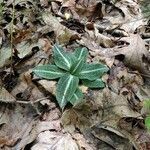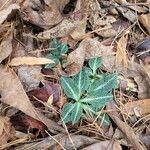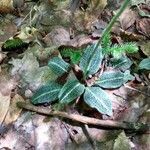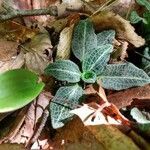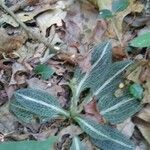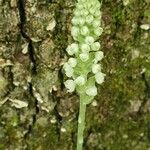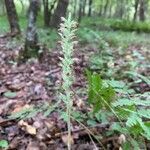Leaves: blade distinctly lined with white or greenish white on veins throughout, broadly elliptic to broadly ovate, 2.1–6.2 × 1.3–3 cm, apex acute or obtuse. Inflorescences 10–57-flowered, cylindric (equally dense on all sides); peduncle 11–35 cm. Flowers: lateral sepals 3.1–5.3 mm; petals distinct; hood 3.6–5.7 mm; lip scrotiform, 2.5–4.2 × 2.2–3.5 mm, apex reflexed, outer surface slightly tuberculate, inner surface with somewhat thickened veins, without glandular processes; anther inflexed, immersed in cup-shaped clinandrium, apex blunt; pollinia blunt; rostellum with marginal notch 0.1–0.4 mm deep; viscidium orbiculate. 2n = 26.
